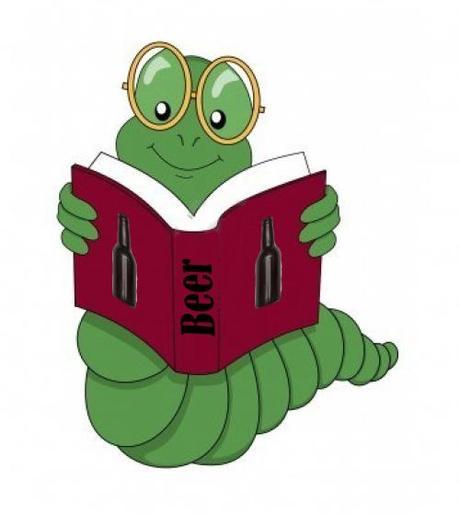
I spend thinking a lot about beer, which often leads me to questions about processes like brewing, selling or packaging the product. As I try to learn more, I figured it would be fun to share. So … “Brew EDU.” Are you curious about something? Contact me on Twitter. Let’s get nerdy…
Chances are, you’ve seen it on bottles in your favorite beer shop: “brewed with natural flavoring.”
But what does it mean?
A variety of things, really … But this is not one of those “can you believe what’s in your beer!?1?” kind of posts.
I became interested in the idea of natural flavoring thanks to the growing popularity of “crafty” beers that are thriving using these various products, whatever they may be. Blue Moon, American’s most popular beer, uses natural flavoring. So does Leinenkugel’s line of shandies, which was one of the fastest growing segment of beers in 2013.
But Big Beer isn’t the only group using natural flavoring, as you can find it in beers from Sam Adams, Shipyard, Rogue and many other craft breweries across the country.
So why natural flavoring? Because it’s easy.
Take a beer like a nut brown, known for a variety of tastes from its malt (maybe some toffee, caramel or butterscotch) but also for its obvious resemblance to the taste of nuts. Why might brewers use natural flavoring over the real thing? Because using nuts that produce oils can greatly impact the head retention of a beer, something a commercial brewer would certainly want to avoid. Buying real nuts may also be cost prohibitive.
The same thing applies with using meat like those bacon beers that keep popping up. The fats and oils from meat will ruin the prospect of head retention and dramatically increases the threat of off-flavors.
That’s why you’ll find many “bacon” tasting beers simply use smoked malt. For example, Rogue uses Briess Cherrywood Smoked Malt and Weyermann Beechwood Smoked Malt to enhance the taste of their Voodoo Maple Bacon Ale, although they claim to also use applewood smoked bacon, too.
 Why the term “natural flavoring?” I’d guess it straddles a fine line between impacting a consumers perception of a product and the legality of what is required to tell a customer. If you put a specific flavor front-and-center on the label – perhaps “lemonade” on Leinenkugel’s Summer Shandy – there will be no doubt in a customer’s mind what they’ll be tasting. For a summer-specific beer like that, it makes sense.
Why the term “natural flavoring?” I’d guess it straddles a fine line between impacting a consumers perception of a product and the legality of what is required to tell a customer. If you put a specific flavor front-and-center on the label – perhaps “lemonade” on Leinenkugel’s Summer Shandy – there will be no doubt in a customer’s mind what they’ll be tasting. For a summer-specific beer like that, it makes sense.
Blue Moon, meanwhile, opts for “natural flavor” slightly hidden on the side of the label, as AB InBev may prefer drinkers to focus on the variety of tastes rather than printing “citrus flavor” and having that be the only taste a person thinks of.
Taking it a step further, if you put “citrus flavor” on a label and someone doesn’t taste citrus, that’s an unhappy customer.
But when you see it on a beer label, what does “natural flavoring” mean, exactly? Here’s an excerpt from the Food and Drug Administration on food labeling requirements:
(3) The term natural flavor or natural flavoring means the essential oil, oleoresin, essence or extractive, protein hydrolysate, distillate, or any product of roasting, heating or enzymolysis, which contains the flavoring constituents derived from a spice, fruit or fruit juice, vegetable or vegetable juice, edible yeast, herb, bark, bud, root, leaf or similar plant material, meat, seafood, poultry, eggs, dairy products, or fermentation products thereof, whose significant function in food is flavoring rather than nutritional. Natural flavors include the natural essence or extractives obtained from plants listed in 182.10, 182.20, 182.40, and 182.50 and part 184 of this chapter, and the substances listed in 172.510 of this chapter.
… and from the Government Printing Office, here’s how the use of natural flavoring impacts beer labeling:
(b) You may use flavors and other nonbeverage ingredients containing alcohol in producing beer. Flavors and other nonbeverage ingredients containing alcohol may contribute no more than 49% of the overall alcohol content of the finished beer. For example, a finished beer that contains 5.0% alcohol by volume must derive a minimum of 2.55% alcohol by volume from the fermentation of ingredients at the brewery and may derive not more than 2.45% alcohol by volume from the addition of flavors and other nonbeverage ingredients containing alcohol. In the case of beer with an alcohol content of more than 6% by volume, no more than 1.5% of the volume of the beer may consist of alcohol derived from added flavors and other nonbeverage ingredients containing alcohol.
I don’t think I’ve ever come across a beer using additional flavorings to impart alcohol aside from the natural use of malts or adjuncts, but if you have, please let me know.
Part of what makes me curious about all this is the commitment of places like Dogfish Head, which will go as far as making a beer with moon dust (because why not) or my favorite local place, Fullsteam, which has seasonal “forager” programs to buy local ingredients from residents and farmers, like persimmons.
There are lots of great beers made with natural flavoring, but I’ll raise my glass any time to brewers who go the extra mile to make something truly natural.
+Bryan Roth
“Don’t drink to get drunk. Drink to enjoy life.” — Jack Kerouac

